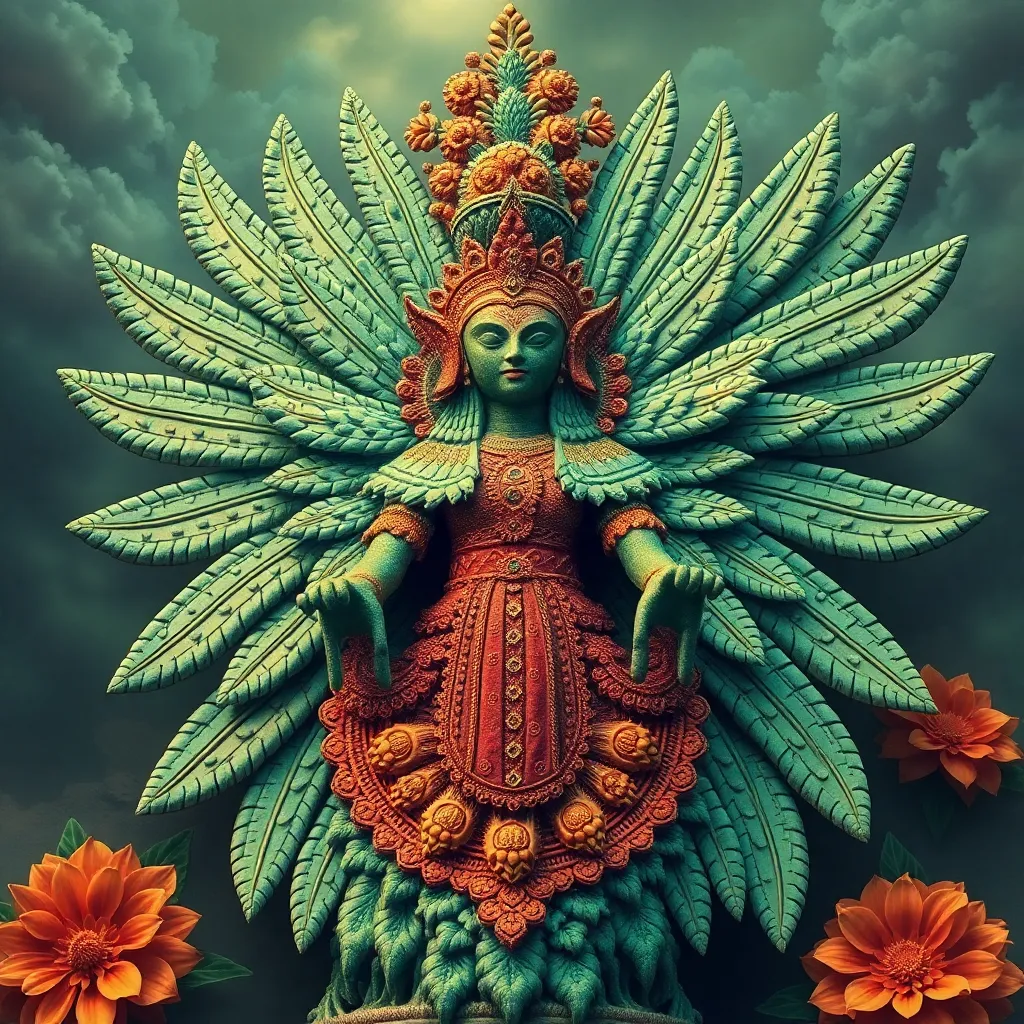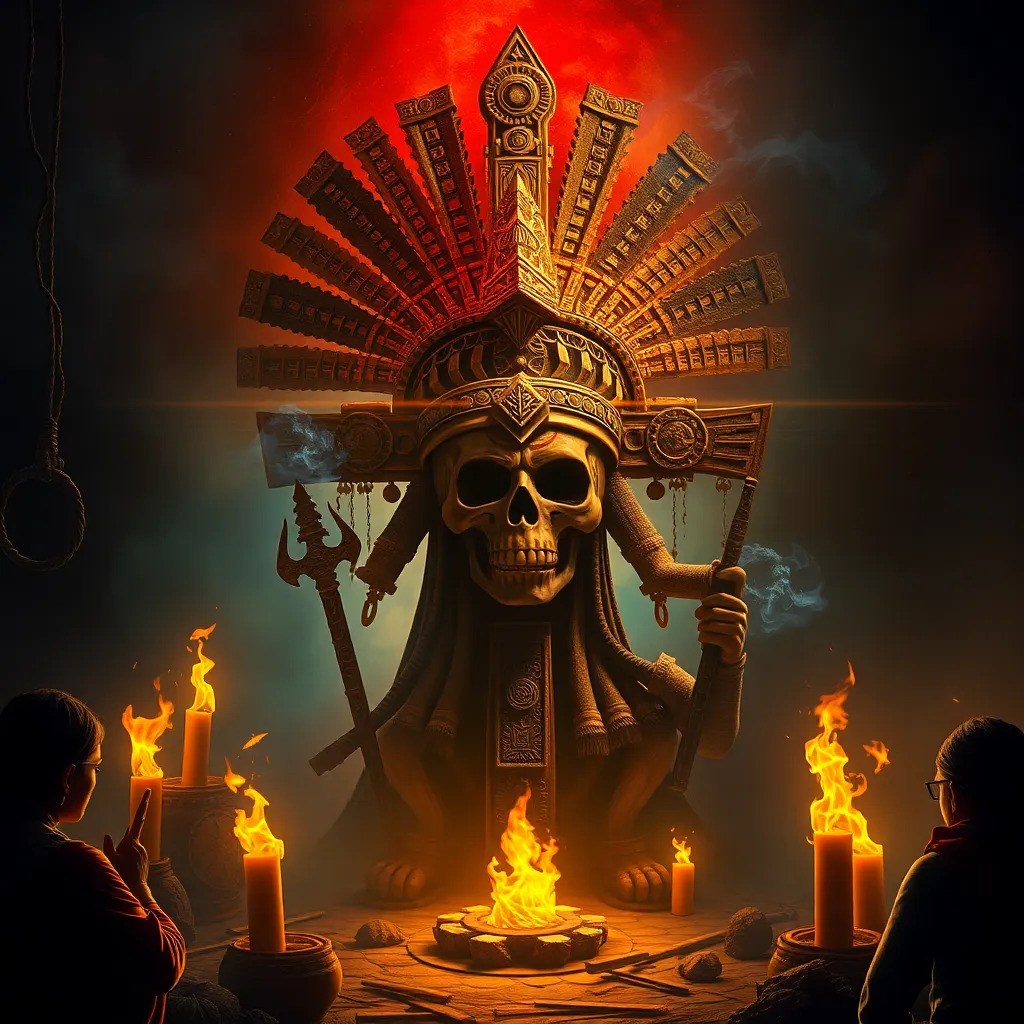Coatlicue in Nahuatl Poetry: Literary Expressions of the Goddess’s Power and Majesty
I. Introduction
Coatlicue, the earth goddess in Aztec mythology, stands as a powerful figure representing the duality of life and death, creation and destruction. Revered as the mother of deities, she embodies the fertility of the earth, the nurturing aspect of motherhood, and the fierce power of the cosmos. Her image is rich with symbolism, making her a central character in various Nahuatl literary expressions.
Nahuatl poetry, a vital component of Aztec culture, serves as a vessel for conveying the intricate narratives and spiritual beliefs of the people. Through metaphor, imagery, and rhythm, poets articulated their reverence for deities like Coatlicue, reflecting the complexities of their existence. This article aims to explore the representation of Coatlicue in Nahuatl poetry, highlighting her power and majesty as depicted by various poets.
II. Historical Context of Nahuatl Poetry
Nahuatl, a Uto-Aztecan language, has deep roots in Mesoamerican history, evolving as a literary language by the 14th century. The poetic tradition flourished during the Aztec Empire, where oral storytelling was a crucial means of preserving culture, history, and spirituality.
Poetry played a significant role in Aztec society, not only as a form of artistic expression but also as a medium for spiritual communication. It was often performed during rituals and ceremonies, connecting the people with their gods. Key poets, such as Nezahualcoyotl, contributed significantly to the evolution of Nahuatl literature, blending philosophical themes with rich imagery and emotional depth.
III. The Symbolism of Coatlicue
Coatlicue, often depicted wearing a skirt made of snakes and adorned with a necklace of human hearts and hands, symbolizes both life and death. Her attributes reflect the earth’s dual nature: nurturing yet fierce, maternal yet terrifying. This duality is a crucial aspect of her character, representing the cycle of life that encompasses birth, growth, decay, and rebirth.
In Nahuatl beliefs, Coatlicue’s symbolism extends beyond her physical representation. She embodies the earth’s fertility and the transformative power of nature. Her significance is interwoven with themes of duality, reflecting the Aztec understanding that creation and destruction are inextricably linked.
IV. Themes of Power and Majesty in Coatlicue Poetry
Nahuatl poetry often explores themes of divine power, particularly in the context of Coatlicue. Her representations encompass various dimensions of strength, including:
- Divine Power: Poets depict her as a force of nature, commanding respect and awe.
- Maternal Strength: Her nurturing aspect highlights the strength found in motherhood, emphasizing care and protection.
- Fear and Reverence: The contrasting emotions associated with her character reflect the complexity of her nature, as both a life-giver and a destroyer.
This interplay of power and majesty is woven throughout Nahuatl poetry, showcasing the multifaceted identity of Coatlicue as both a protector and a formidable presence in the cosmos.
V. Analysis of Key Poetic Works Featuring Coatlicue
Several notable poems reference or center around Coatlicue, each offering a unique perspective on her character. For instance, the works of Nezahualcoyotl often explore existential themes, using Coatlicue as a symbol of the cyclical nature of life.
Literary devices such as metaphor, simile, and vivid imagery are commonly employed to convey her power:
- Metaphor: Poets frequently liken Coatlicue to elements of nature, emphasizing her connection to the earth.
- Imagery: Vivid descriptions of her appearance evoke the senses, painting a picture of her majesty and fearfulness.
Through comparative analysis, different poets approach her character from distinct angles, some focusing on her nurturing side, while others highlight her fierce, destructive capabilities. This diversity enriches the understanding of Coatlicue’s role in the Aztec pantheon.
VI. The Role of Ritual and Ceremony in Nahuatl Poetry
Poetry in Aztec culture was deeply intertwined with ritual and worship. The performance of poems dedicated to Coatlicue often occurred during religious ceremonies, reinforcing her significance in the spiritual lives of the people. These rituals served not only to honor her but also to invoke her power for protection, fertility, and guidance.
The impact of ritual on the portrayal of Coatlicue’s majesty is profound. The ceremonial context elevates her status, transforming her into a central figure in the community’s spiritual practices. The rhythmic recitation of poetry during these rituals enhances the connection between the divine and the earthly realms, allowing worshippers to experience her presence in a tangible way.
VII. Modern Interpretations and Legacy of Coatlicue in Literature
The influence of Nahuatl poetry on contemporary literature and art is significant. Modern interpretations of Coatlicue often draw from traditional themes, reimagining her character in various contexts. Artists and writers continue to explore her power and majesty, reflecting the goddess’s enduring relevance in cultural discourse.
Contemporary works may reinterpret Coatlicue’s symbolism, addressing themes such as:
- Feminism: Her character is sometimes viewed through a feminist lens, emphasizing her strength and resilience.
- Environmentalism: As a goddess of the earth, Coatlicue’s imagery resonates with modern ecological concerns.
These reinterpretations highlight the adaptability of her character and the ongoing relevance of her story in today’s society.
VIII. Conclusion
Through the exploration of Coatlicue in Nahuatl poetry, we gain valuable insights into the complexities of her character and the themes of power and majesty that define her. The enduring legacy of Coatlicue as a symbol of strength continues to inspire and provoke thought, reminding us of the rich literary traditions that have shaped cultural narratives throughout history.
As we reflect on the representations of Coatlicue, it becomes clear that further study and appreciation of Nahuatl literary traditions can deepen our understanding of not only Aztec mythology but also the universal themes of life, death, and the human experience.



